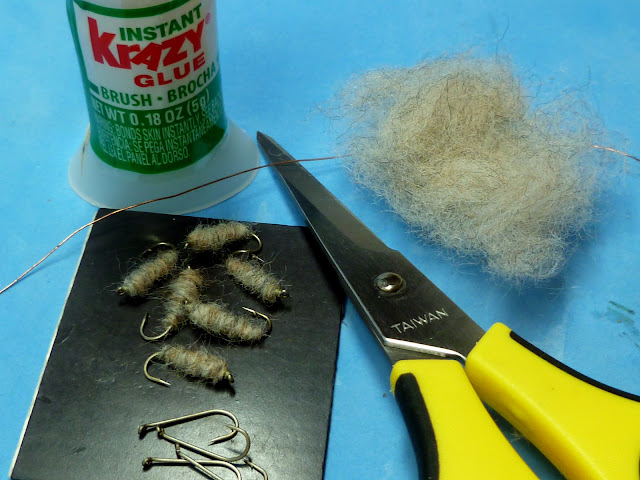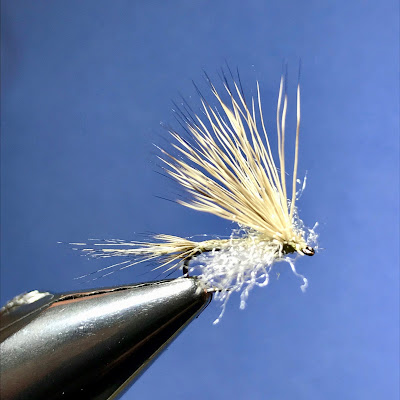Leeches.. Yikes!
Leeches, really?
Have you ever run out of ideas, flies, to throw at that stubborn trout? He's not moving much, not actively feeding? Here's the deal --- throw him a leech! Last year out West Michelle and I both caught our biggest trout on tandem rigs featuring two leeches. We were fly fishing in the Northeast corner of Yellowstone National Park where the Cutthroats get lots of attention. Both trout were stubborn and didn't want to play, they had seen it all in this heavily fished stream. Until we gave them a leech to look at, bam fish on! We cast them quartering upstream, let them dead drift, then swing and then strip them in slowly with short strokes. When all else fails, give 'em leeches.
I tie simple leeches. All you need is; a bead, hook and a piece of yarn. Use some strong thread to hold it all together... brush and tease it out and you have your leech. The best colors for out West; black, brown, olive and dark red... sizes 10-12. Here in the East; pink, black, red and for some unknown reason yellow... sizes 12-14.
Have you ever run out of ideas, flies, to throw at that stubborn trout? He's not moving much, not actively feeding? Here's the deal --- throw him a leech! Last year out West Michelle and I both caught our biggest trout on tandem rigs featuring two leeches. We were fly fishing in the Northeast corner of Yellowstone National Park where the Cutthroats get lots of attention. Both trout were stubborn and didn't want to play, they had seen it all in this heavily fished stream. Until we gave them a leech to look at, bam fish on! We cast them quartering upstream, let them dead drift, then swing and then strip them in slowly with short strokes. When all else fails, give 'em leeches.
 |
| Photographed and tied by Doug Korn |
I tie simple leeches. All you need is; a bead, hook and a piece of yarn. Use some strong thread to hold it all together... brush and tease it out and you have your leech. The best colors for out West; black, brown, olive and dark red... sizes 10-12. Here in the East; pink, black, red and for some unknown reason yellow... sizes 12-14.





like the look of those, would make nice damsel patterns. When you say yarn do you use a specific type?
ReplyDeleteCheers
Dan
Dan, any type of yarn will work. I find the ones with less wool hold up better. I start the yarn behind the bead and tie it down to the bend of the hook. Then make a loop tail and tie that down at the bend. Then bring my thread forward to behind the hook. Wrap the yarn forward forming the body and tie it off at the bead with a whip finish. Take a a firm toothbrush and or a dubbing teaser and brush out the leach including the tail. Clear as mud I know....
ReplyDeleteLove the Blog;
ReplyDeleteI tie THOUSANDS of Leeches EVERY year. I live in BC Canada, and in our lakes, you MUST have them, they are a staple and are one of the most effective patterns around.
One hint for you, buy a popcicle stick and some valcro at a dollar store. Glue the Male part of the valcro to the stick and use it as a dubbing brush. I do 3-4 sets of whip finishes on ALL of my leeches because i am VEY rough with pulling out the fibers with the Valcro.
Doing this will give your flies a much better underwater profile.
Rick Passek
My thanks Rick.... good tip!
ReplyDelete